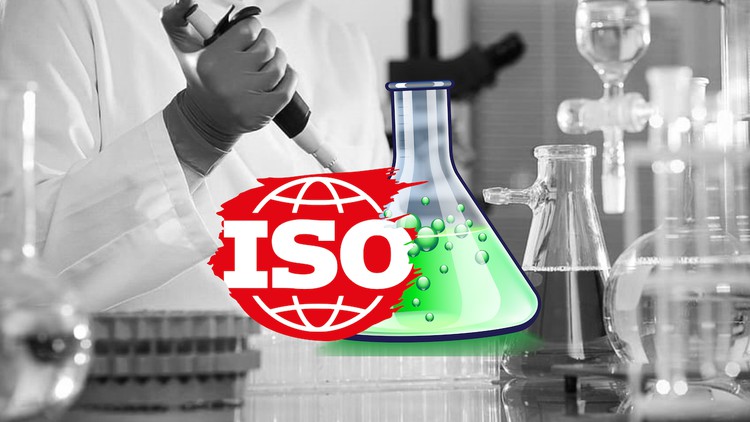
Building Effective Quality Management Systems with ISO/IEC 17025:2017 Standard
What you will learn
The fundamental concepts and principles of ISO/IEC 17025:2017 standard for testing and calibration laboratories
The requirements and guidelines for establishing and maintaining an effective quality management system (QMS) that complies with the ISO/IEC 17025:2017 standard
The process of developing and implementing laboratory policies, procedures, and practices that are consistent with the ISO/IEC 17025:2017 standard
The tools and techniques for effectively managing laboratory resources, including personnel, facilities, equipment, and external providers
The methods for verifying the validity of test and calibration results, including sampling, selection of test methods, and measurement uncertainty
The process of handling and controlling data, technical records, and management system documents to ensure traceability, accuracy, and integrity of results
The principles and practices of internal quality control, including replication, inter-laboratory comparisons, and proficiency testing
The process of reporting test and calibration results, managing complaints, and dealing with nonconforming work
The tools and techniques for conducting effective audits and assessments of laboratory quality management systems, and identifying areas for improvement
Description
This comprehensive course on ISO 17025 is designed to equip you with the knowledge and skills necessary to effectively manage quality in testing and calibration laboratories. The course is divided into 15 sections and covers all the key requirements of the standard, including general requirements, facilities and environmental conditions, equipment, metrological traceability, external providers, selection verification and validation of models, sampling, handling of test and calibration, technical records, reporting of results, complaints, control of data, management system documents, and control of records.
Section 2 introduces you to ISO 17025 and its general requirements, including the standard’s structure and resources required for compliance. You will learn about the importance of quality management systems, the role of documentation, and the responsibilities of laboratory management.
In section 3, you will learn about the requirements for facilities and environmental conditions in a laboratory. You will explore tools for implementing environmental conditions and the impact of facilities on the accuracy and reliability of test and calibration results.
Section 4 covers equipment requirements, including the importance of effective tools for equipment implementation and compliance, as well as the management of non-conforming equipment. You will learn about the importance of calibration and verification and the impact of equipment on the accuracy and reliability of test and calibration results.
Section 5 focuses on metrological traceability and reference standards. You will learn about the importance of testing and calibration and the role of reference standards in ensuring the accuracy and reliability of test results. You will also explore the concept of measurement uncertainty and its impact on test and calibration results.
Section 6 covers external providers, reviewing requests, and effective tools for implementation and compliance. You will learn about the requirements for selecting and managing external providers, including the importance of communication and documentation.
In section 7, you will explore selection verification and validation of models, including the selection of test methods and the importance of measurement uncertainty in determining the accuracy and reliability of test and calibration results.
Section 8 covers the importance of sampling and the development of a sampling plan. You will learn about the different types of samples and the impact of sampling on test and calibration results.
Section 9 delves into handling of test and calibration and receipt and identification of test. You will explore the importance of sample tracking and handling, including the impact of sample handling on test and calibration results.
Section 10 covers technical records, assuring the validity of results, internal quality control, and test and calibration replication. You will learn about the importance of documentation, quality control measures, and the impact of replication on test and calibration results.
Section 11 focuses on reporting results and questions to consider during an audit. You will explore the importance of accurate and reliable reporting of test and calibration results and the requirements for auditing laboratory procedures and documentation.
Section 12 covers complaints, the four-step closed-loop process, non-conforming work, and strategy. You will learn about the importance of managing complaints and non-conforming work, including the impact of these issues on laboratory performance.
Section 13 covers control of data and options, as well as the management system and effective tools for implementation and compliance. You will learn about the importance of data control, including the impact of data management on test and calibration results, and explore practical tools and strategies for data management.
Section 14 focuses on management system documents, control of management system documents, obsolete documents, and the master document list. You will learn about the requirements for managing and controlling laboratory documentation, including the impact of document control on laboratory performance.
Finally, section 15 covers control of records and effective tools for control records. You will learn about the importance of record-keeping and explore practical tools and strategies for managing laboratory records. By the end of this course, you will have a deep understanding of ISO 17025 and the tools and strategies necessary for effective compliance and quality management in testing and calibration laboratories.
By the end of this course, you will have a deep understanding of ISO 17025 and be able to apply its requirements in your laboratory to ensure the highest levels of quality and compliance. You will also gain practical tools and strategies for implementation and compliance, making this course an essential resource for laboratory managers and quality professionals.
Content